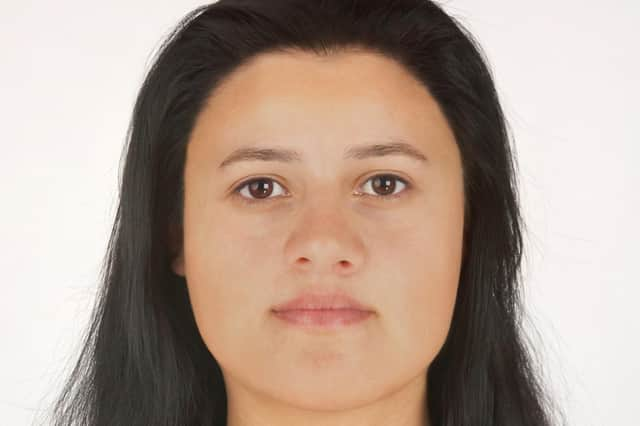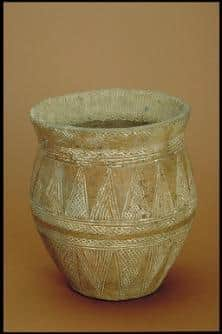Who were the lost Beaker People of Scotland?


The Beaker People, so-called because they were buried with a distinctive type of clay vessel in their tombs, went on to significantly change the DNA of the resident population.
The people take their names from a new, bell-shaped pottery style that appeared in Iberia, in present-day Spain and Portugal around 4,500 years ago. These 'bell-beakers' quickly spread across Europe, reaching Britain fewer than 100 years later.
Advertisement
Hide AdAdvertisement
Hide AdA key to these Bronze Age people, who lived between 2400 and 1800 BC, is the the skeleton of a woman whose bones were found in a grave cut into solid bedrock at Achavanich in Caithness in 1987.


Known as ‘Ava’, modern DNA research techniques showed that she was descended from European migrants from the Netherlands who arrived in Britain either one or two generations before she was born.
A study of DNA extracted from her remains found that Ava was around 18 to 25-years-old when she died, had straight black hair and brown eyes.
Her people are known to have introduced metal working and mixed with local farming cultures following their migration.
Ava’s remains were found alongside an extensively decorated clay Beaker pot. By her head lay a tiny flint scraper the size of a thumbnail and two small flakes of flint.
A shoulder of beef from a small, young adult cow had been placed by her left shoulder.
Traces of meadowsweet and St. John’s wort found at the site may represent a deliberate inclusion of flowers within the burial.
The find of charcoal suggest hat some burning might have taken place around the burial.
Advertisement
Hide AdAdvertisement
Hide AdAva’s skeleton has been examined once against for Channel 4 show The Bone Detectives, which is due to screen this summer.
The programme will feature items from the University of Aberdeen’s museum collection, which has what has been described as Europe’s best curated collection relating to these people, including some 80 skeletons and objects with which they were buried.
Ava will be compared with a man whose burial was found on the farm of Newlands, near Oyne in Aberdeenshire, which is now in the care of the University’s museum collections.
As well as a Beaker, he was buried with an item which has been identified as an archer’s wrist-guard, while the programme will also show a set of mint-condition flint arrowheads found in a burial from Borrowstone Farm near Aberdeen.
The University’s Head of Museums and Special Collections Neil Curtis said that there were various reasons for the University having such an important collection associated with the Beaker people.
He said: “The main reason is that the North-east of Scotland was one the areas that had very strong connections with the European Beaker phenomenon 4,000 years ago.
“On top of that, their burial in stone cists protected them for thousands of years, until they were discovered by farming, road and house building since the nineteenth century. Finally, the strong links between the University’s medical school and its museum meant that anatomists were well-placed to collect, study and curate the skeletons and other finds.”
In recent years, the University Museum’s Leverhulme Trust ‘Beakers and Bodies Project’ has radiocarbon-dated almost all the skeletons from the North-east of Scotland and made various discoveries, including identifying a particular style of Beaker found only in Buchan, and that most of the Beakers had originally had their decoration enhanced with a white paste made from burnt bones.
Advertisement
Hide AdAdvertisement
Hide AdThe programme will show a selection of Beakers and other items from the University collection, including some of Scotland’s earliest bronze tools and moulds used for making bronze axes. It will also discuss new studies of ancient DNA that suggest that the ancestors of the people buried with Beakers in Scotland were part of a major migration across Europe.
A major study in 2018, which was led by research at Harvard University and the Natural History Museum in London, found that the spread of the Beaker people, who also settled across large swathes of England, was associated with the replacement of approximately 90% of Britain’s gene pool.
DNA also showed that the Beaker folk would have had generally different pigmentation that of the population they replaced, who had olive-brown skin, dark hair and brown eyes.
In comparison, the Beaker folk brought a significant reduction in skin and eye pigmentation, with lighter skin, blue eyes and blonde hair becoming more common in the population, the study found.
A message from the Editor:
Thank you for reading this story on our website. While I have your attention, I also have an important request to make of you.With the coronavirus lockdown having a major impact on many of our advertisers - and consequently the revenue we receive - we are more reliant than ever on you taking out a digital subscription.Subscribe to scotsman.com and enjoy unlimited access to Scottish news and information online and on our app. With a digital subscription, you can read more than 5 articles, see fewer ads, enjoy faster load times, and get access to exclusive newsletters and content. Visit https://www.scotsman.com/subscriptions now to sign up.
Our journalism costs money and we rely on advertising, print and digital revenues to help to support them. By supporting us, we are able to support you in providing trusted, fact-checked content for this website.
Joy Yates
Editorial Director